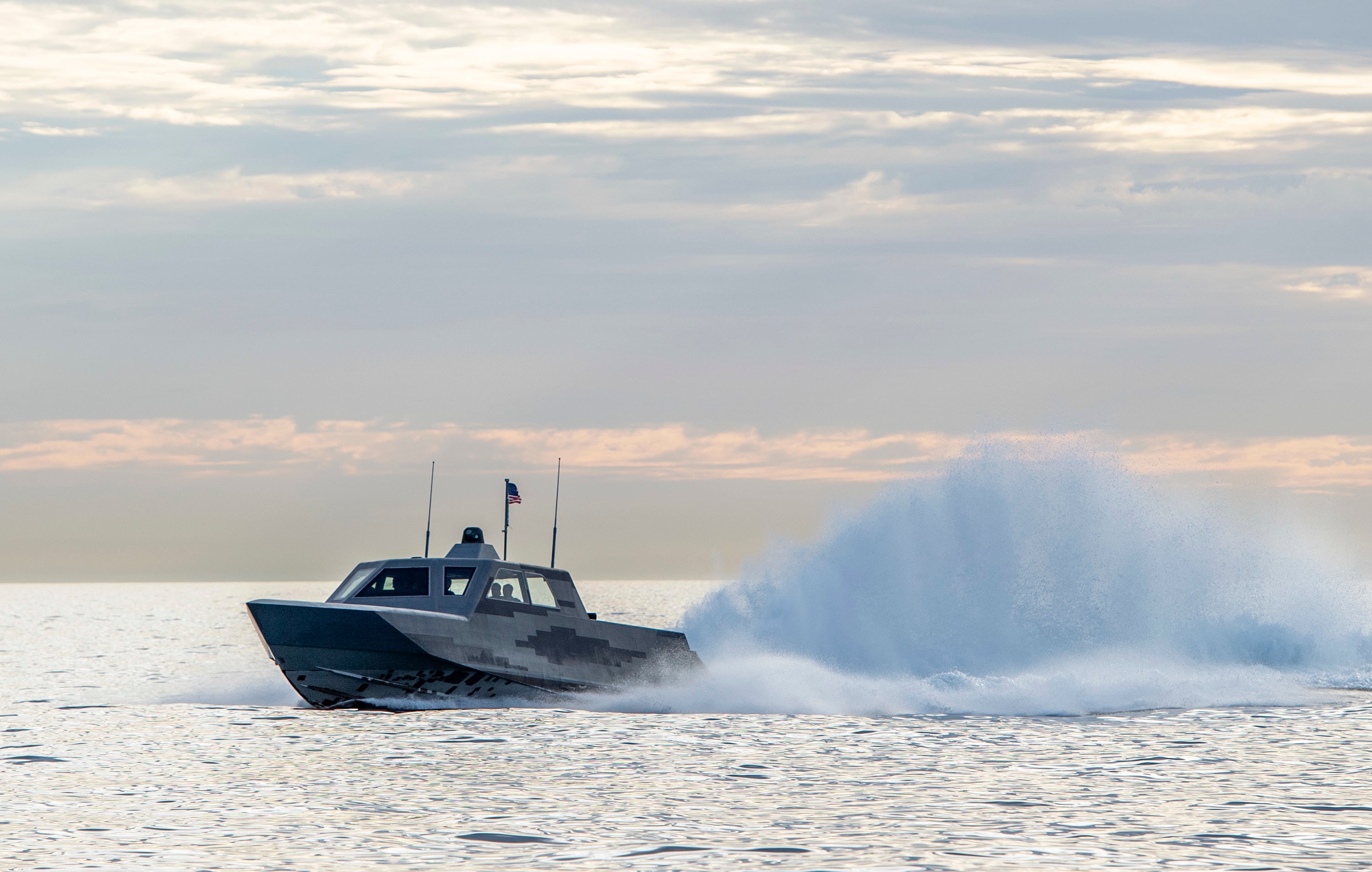TAMPA, Fla. – Navy special operations officials have fielded a variety of new vessels in recent years but are looking to add both electronic and kinetic firepower to some of those watercraft.
From surface vessels to dive gear, undersea vessels and dive shelters, officials with the Special Operations Command Program Executive Office-Maritime laid out their needs Tuesday at the annual Global SOF Foundation Special Operations Force Week.
Thirty of 31 combatant-craft medium boats have fielded in recent years, and the next steps for the vessels are under the CCM-Mk 2 program. That will potentially see a suite of launched effects, such as short-range rockets or electronic warfare means added to the boats.
Those launched effects fall under a program known as maritime precision engagement, basically adding a precise-strike capability to the vessels.
With those launchers, the CCM — and its cousins, the Combatant Craft Heavy and Combatant Craft Assault — are all set to add Forward Looking Infrared devices to the entire fleet. The Navy has 84 such FLIR devices for just that effort.
RELATED

The SOCOM Program Executive Office-Maritime fielded 42 combatant craft assault vessels between 2014 and 2023, said Cmdr. Nick Van Dyke, head of surface systems.
For the CCH, three have been fielded, with two more on deck in the production phase, Van Dyke said.
Alongside those surface vessels, the team is looking for unmanned options for both short-endurance and long-endurance missions. Those types of vehicles autonomously navigate waters at various distances, monitoring traffic or delivering sensors, or eventually, payloads.
The SOCOM maritime team wants 13 short-endurance and 12 long-endurance autonomous unmanned surface vessels by fiscal 2027.
Later this week, the team plans to put out a request for information to industry for a smaller, unmanned, undersea vessel that can fit into a submarine lock in/lock out chamber.
That vessel could accompany the Seal Delivery Vehicle Mk 11, of which 10 have been delivered to SOCOM between 2018 and 2024.
The Mk 11 upgrades from the legacy Mk 8 include improved software, accurate navigation, increased range and increased cargo capacity, said Cmdr. Mike Linn, head of the undersea portfolio for PEO Maritime.
The maritime team is also looking to replace the Dry Deck Shelter, five of which are in operation and have been in operation for decades. The Dry Deck Next project kicked off in 2024 and is expected to span the next five years, looking at various ways to improve upon the older shelter, said Eric Moore, head of special mission systems for maritime.
Those improvements include remote payload launch and recovery, pressure hull, hanger outer door closure system and reduced signatures for less detection.
Todd South has written about crime, courts, government and the military for multiple publications since 2004 and was named a 2014 Pulitzer finalist for a co-written project on witness intimidation. Todd is a Marine veteran of the Iraq War.





